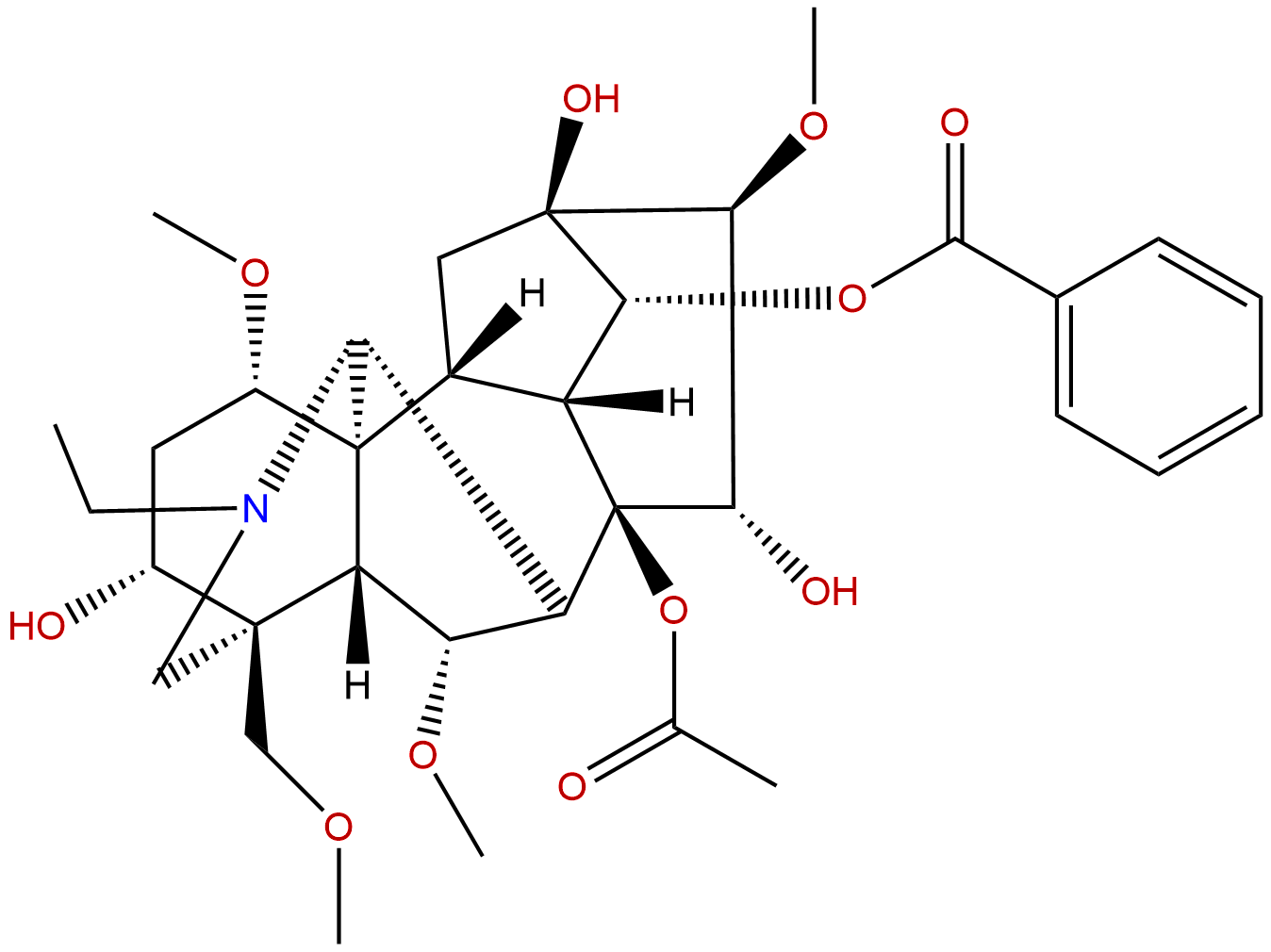
AconitineCAS No.:302-27-2
|
||||||||||
 |
|
|
||||||||

| Catalogue No.: | BP0121 |
| Formula: | C34H47NO11 |
| Mol Weight: | 645.746 |
Product name: Aconitine
Synonym name:
Catalogue No.: BP0121
Cas No.: 302-27-2
Formula: C34H47NO11
Mol Weight: 645.746
Botanical Source: Sessile Stemona Root
Physical Description:
Type of Compound: Alkaloids
Purity: 95%~99%
Analysis Method: HPLC-DAD or/and HPLC-ELSD
Identification Method: Mass, NMR
Packing: Brown vial or HDPE plastic bottle
Storage: Store in a well closed container, protected from air and light. Put into refrigerate or freeze for long term storage.
The product could be supplied from milligrams to grams
Inquire for bulk scale.
Description:
Aconitine, one of the major Aconitum alkaloids, is a highly toxic compound from the Aconitum species, it appears to exert a long-lasting cholinergic action in the causation of severe arrhythmias leading to death.
References:
Forensic Sci Int. 2005 Feb 10;148(1):21-9.
Effects of long-term administrations of aconitine on electrocardiogram and tissue concentrations of aconitine and its metabolites in mice.
Aconitum alkaloids are well known for their acute and high toxicity, for example, in the causation of severe arrhythmias leading to death. Aconitine, one of the major Aconitum alkaloids, is a highly toxic compound from the Aconitum species. However, there has been no studies reported on the influence of the chronic administration of Aconitine. Thus, this study was conducted to investigate the influence of chronic administration of Aconitine in experimental animal models.
METHODS AND RESULTS:
A dose of 1mg/kg per day was administered to the experimental animal models. We determined the concentration of Aconitine and its metabolites (benzoylaconine and aconine) in organs and blood with gas chromatography/selected ion monitoring (GC/SIM). In addition, we concurrently recorded the electrocardiogram (ECG). Fifteen minutes after administration on day 0, the early Aconitine administered group (acute group) revealed peak organ and blood concentration levels of Aconitine with a gradual decrease, thereafter. The concentration of Aconitine in organs and blood (from days 0 to 22; 90 min after the last administration of Aconitine) gradually decreased according to repeated administration, whereas benzoylaconine and aconine increased. ECG revealed various types of arrhythmias. However, the frequency of arrhythmias remarkably decreased with time and repeated administration of Aconitine.
CONCLUSIONS:
These results indicate two possibilities. First, the increase in the activity of Aconitine metabolism. Secondly, the decrease of effectiveness to the heart due to long-term (chronic) administration of Aconitine.
HPLC of Aconitine
